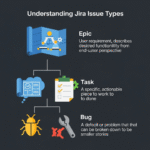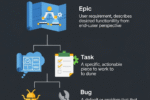The landscape of digital transformation is undergoing a major shift. Although traditional software development was only the domain of expert programmers, 2025 is the moment that non-technical workers are taking over the spotlight as creators of apps. This phenomenon, referred to as “citizen development,” isn’t simply a trend but an entire shift in the way businesses think about technological solutions.
The Perfect Storm: Why 2025 is the Tipping Point
Many converging forces have created the perfect conditions for the development of citizen developers in 2025:
A Detailed Analysis of the Developer Shortage Crisis The numbers provide a stark image. Based on Kissflow’s extensive analysis that the US is facing a shortage of 500 000 software developers in 2025, with the worldwide shortage likely to reach 85.2 millions by the year 2030. It’s not just a staffing issue, it’s a continuity issue that requires innovative solutions.
Explosive Demand for Applications
Gartner analysis indicates that demand for development of applications is expected to grow by at least 5 times more quickly than traditional IT departments are able to meet. The typical IT backlog currently ranges between three and twelve months, causing problems that limit business’s agility.
The Rise of the Citizen Developer: By the Numbers
The numbers on the development of citizens 2025 are amazing:
- 4:1 Ratio Kissflow has reported that citizens developers are set to surpass professional developers 4 to 1 by 2025.
- 70 percent of new applications According to numerous sources from the industry 70% of all new applications created by companies will utilize low-code or no code technologies by 2025.
- 30% Created by Non-Technical staff: Research indicates that 30% of apps that are custom-designed are created by employees who have little or no technical expertise
- 75% Enterprise Adoption An analysis of the industry shows the fact that 75% of big enterprises will be using four or more no-code/low-code tools in 2025.
The Technology Enablers: Low-Code/No-Code Platforms
The development of the citizen would not be possible without sophisticated low-code and no-code platforms which have advanced substantially. Gartner forecasts suggest that the global low-code platform for development will be worth 187 billion dollars by 2030.
These platforms provide:
- Drag-and-drop interfaces that remove the need for traditional programming
- Pre-built components that speed up the development process
- Integration capabilities that can be connected to existing enterprise systems
- AI-powered help that helps non-technical people through the complexities of procedures
Real-World Impact: Citizen Developers in Action
The process of transformation is already underway across all industries. Insight Enterprises has published numerous success stories that include:
- A supermarket chain that streamlines task management in real-time, on mobile devices
- An airline is developing search engines for flight data which will save hundreds of hours
- A manufacturing company automatizing quality control checks
One particularly impressive case study involves a client’s citizen developer program that has been running for two years, resulting in over 100 applications–demonstrating the scalability and impact of empowering non-technical employees.
The Business Case: Why Organizations Are Embracing Citizen Development
Speed and Agility
Research conducted by App Builder indicates that low-code platforms can cut development time by 50-90% when compared to conventional methods. The speed benefit is vital in today’s highly competitive business world which is where time to market can determine achievement.
Cost Efficiency
The financial rewards are huge. Low-code solutions allow companies to not hire additional software developers, thereby saving millions of dollars in development costs, while redirecting IT resources towards more strategic projects.
Innovation at the Source
Most importantly, citizens development places the capability to create new ideas directly in the people who know business issues the most. If employees are able to develop solutions to their own problems The results are typically more effective and practical than top-down IT initiatives.
The Governance Challenge Balancing Freedom with Control
Although the increasing accessibility of app development can bring enormous advantages, it also poses new issues. Industry experts emphasize that the most successful citizen development programs will require:
- Frameworks for governance that are clear that ensure safety and ensure compliance
- Training programs to develop citizen developer skills
- IT oversight to ensure integrity of the system as well as data security
- Centers of Excellence to provide best practices to the entire organization
Looking Ahead: The Future of Citizen Development
As we progress through 2025 and beyond developments will determine the direction of development for citizens:
AI Integration
Artificial intelligence is more and more integrated into low-code platforms offering intelligent recommendations, automated testing and even the generation of code from natural descriptions of language.
Enterprise-Grade Capabilities
The modern citizen-driven development platform is going beyond the simple application to support complex, mission-critical enterprise applications that are robust in security, scalability and integration capabilities.
Industry-Specific Solutions
We’re seeing the development of platforms that are tailored to specific industries, providing templates that are pre-designed and parts to address specific challenges in the sector.
The Strategic Imperative: Why Organizations Can’t Afford to Wait
The evidence is abundant 2025 marks a turning time for the advancement of citizenry. Businesses that embrace this paradigm will enjoy important competitive advantages
- Rapider response to market shifts by rapid development of applications
- Enhanced employee satisfaction by giving workers the ability to solve their own issues
- Reduced IT bottlenecks, allowing tech teams to concentrate on strategic initiatives
- Innovation is enhanced through the democratization of accessibility to tools for development
Forrester Research shows that 91 percent of business and IT decision makers in charge of digital transformation initiatives utilize low-code technology to enhance their IT capabilities, and to encourage agility and creativity.
Final Thoughts: Embracing the Citizen Developer Revolution
The emergence of citizen developers by 2025 isn’t only about technology, it’s about fundamentally changing the way organizations tackle innovation and problem solving. Through empowering employees who aren’t tech-savvy with advanced yet easy tools for development, companies will be able to attain unprecedented levels of flexibility as well as efficiency, creativity, and innovation.
It’s not about whether citizen development will change your business, but rather whether you is a leader or follower of this new era. The businesses that understand and embrace the shift now can be among the companies who prosper in the digital-first world of tomorrow.
At this turning point it is a fact 2025 will be remembered as the year that citizens began to move from the fringes to mainstream, forever altering the way we think about who is able to build the apps that drive our business.
The trends and statistics discussed in the article have been based on research conducted by top industry analysts like Gartner, Forrester, and specific platforms such as Kissflow, Quixy, and App Builder. The rapid development of citizen development is one of the biggest shifts in technology adoption by enterprise in the last few years.







